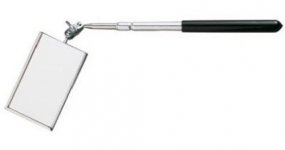You will hear & maybe feel them once they're worn down to metal on metal, but that means you might need to replace the discs too!! :cus:
So apart from taking the wheels off & inspecting the pads, you'll probably only be able to check earlier than that by using a flashlight, a mirror, and looking carefully to see the pad thickness remaining.... and you'll need to check the pad thickness on
BOTH pads on each disc, cos if the caliper pins seize (as they sometimes do!

) you might wear one pad completely down while the other still looks OK! :lecturef_smilie:
Good Luck! :cheers:

